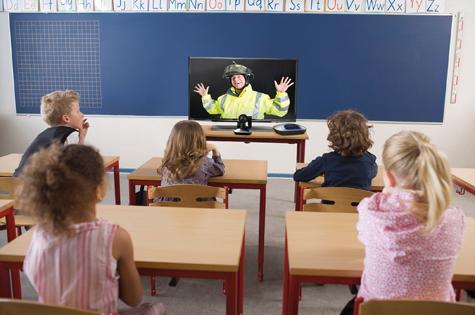More than three million school students (including those starting Kindergarten) return to school this month and are set to be the some of the most technology-advanced kids in Australian schools.
There are some trends we are seeing in the classroom that we would love to share with Motherpedia readers about the exciting ways our children will be learning and how we as parents can make sure they are prepared for the tech-ready learning.
The classroom of 2015 looks vastly different to the classroom of ten or even five years ago and its no lie that technology will play an even greater role in our children’s education this year and beyond. Over the past 10-15 years technology has made a huge impact on the way children learn and interact with the world. With the advent of faster internet services, such as the National Broadband Network (NBN), access to these technologies is becoming easier and more widespread.
Here are some of the things to look out for.
1. Hands on technology
- Introduction of more creative, hands-on electronics through devices such as 3D printers and Makey Makey, an invention kit which can link every day objects to the internet, so your child could play the piano using bananas!
- While the technology is not necessarily ‘new’ for 2015, its becoming more user friendly, making it easier for children to learn, create and explore and become the engineers and architects of tomorrow.
2. The global classroom
- School projects will no longer be limited to the classroom. The rise of global projects, such as The Hour Code (where students across the world learn how to code together) will become increasingly popular. With the classroom walls fast expanding, children will also be exposed to new and different cultures – making for a better-rounded educational experience.
3. Computer programming no longer left to the adults
- Computer programming will become more prominent in the Australian Curriculum. Whilst programming has existed in the Curriculum for a few years now, most schools don’t currently teach coding (and if they do, it’s only as an elective).
- I think this year will see a push for more classes in this field as the demand for these skills in the workforce increases. Children will learn how to use programs such as Makey Makey, Arduino, RaspberryPi, Sratch and Kodu.
4. Will pens and paper become more obsolete?
- All this talk of technology makes us wonder will our kids be sitting in a classroom where pens and paper are obsolete? Nothing becomes obsolete over night, but I can definitely see a decrease in textbooks as eBooks become more of a practical and cost effective option.
- For higher learning, lecture rooms will continue to move from the physical to the digital – with videos and podcasts making it easier and more flexible for students to learn.
5. The death of the school excursion
- I also think the humble school excursion is up for a bit of a makeover. Whilst I would never suggest they be abandoned, far away places will be able to be accessed via video excursions, whereby experts and are beamed into the classroom. An exciting future for Aussie Students taking on the world from their classrooms!
6. Homework becomes more fun and moves online
- Advancements in technology, along with fast and accessible Internet access via the NBN, mean that homework and at-home learning is no longer an isolated and unassisted activity. Probably one of the most exciting changes to homework and e-learning is that students can become creators as well as consumers making homework a lot more fun.
- We now see children making their own videos, writing blogs, and uploading videos to YouTube. Not only are they celebrating their achievements, they’re also sharing their discoveries and providing assistance and instruction for others.
So with all these trends due to hit our classrooms in 2015 there are three tips below that parents can adopt to make sure their home and children are technology savvy and ready.
- Where possible provide up-to-date technology and access to the Internet. If you don’t have access in your own homes, your local library or community centres should have what you need.
- Encourage your child to use technology as a creative and productive outlet. For example, create a private Instagram account where children can post their own pictures. You could even give them a challenge, such as upload a photo that makes you happy, sad, laugh, etc.
- Talk about security practices with children, such as how to establish a strong password, and setting restrictions on how much time they spend online.



















__small.png)










